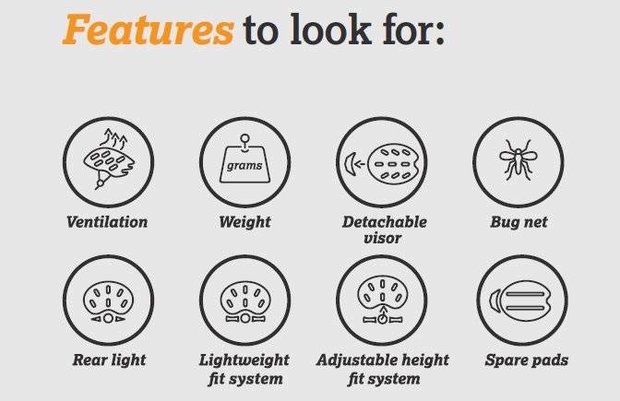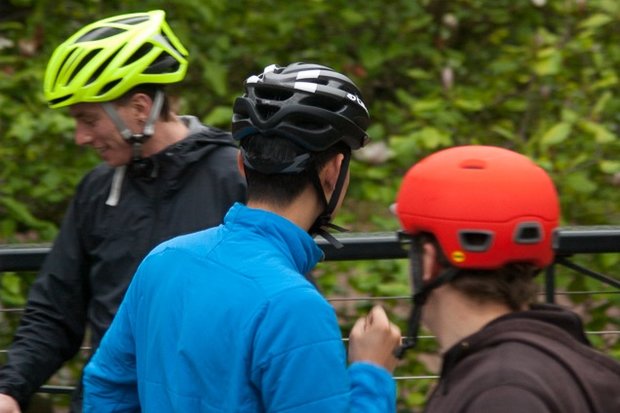Dangers of fake cycling helmets
The Do’s and Dont’s of bicycle helmets
When bicycle riders share the roads with motor vehicles, they have a higher risk of suffering serious injuries or being killed in accidents because they have little protection from the forces of collisions.
For this reason, it is imperative to have the correct safety equipment, with the most important being your helmet. People are willing to invest the money into a good quality helmet knowing how important it is. The issue with this is that there are a lot of counterfeits going around nowadays which can lead to being fatal.
Anatomy of your helmet
Your fully equipped helmet will contain the following elements:
-
an outer plastic shell which can either be hard plastic or softer
-
flexible plastic
-
a foam section constructed from several layers to protect and cushion the head in case of impact
-
a fit system (often adjustable) with a chin strap to ensure the helmet stays securely in place,
-
padding for comfort
-
vents to allow airflow through
Why are these counterfeits dangerous?
These helmets are made to look exactly like helmets which come from reputable companies although they do not meet the certain safety regulations of the non-counterfeit ones. They lack vital safety features which are essential in the event the cyclist is ever in an accident. The counterfeit helmets are made out of cheaper, rigid plastic and have thinner cushioning on the interior. They also do not have the protective fibre skeletons inside of them that help to keep the helmets from breaking when people hit their heads.
Things to note about an adequate helmet that contains the correct safety features:
-
Meets European standards - it should have EN 1078 (adult helmets) or EN 1080 (kids' helmets).
-
Strap (to tighten) - should remain in place, designed to be strong and should not be able to be pulled to remove the helmet, also that the helmet is correctly fitted as if this is not the case in the event of an incident you may as well not be wearing a helmet.
-
Correct helmet type - for the type of cycling you will be doing, for example, a mountain bike helmet vs a road bike helmet will have different qualities.
-
Linear - absorbs impact
-
Single mould construction - fuses the parts together for a tough but lightweight helmet
-
Shell - designed to hold together under pressure
-
Good ventilation - to keep your head cool as air passes over the helmet, while ventilation is not an essential safety feature an overheated head is not a happy head and can be quite uncomfortable especially over long distances.
Check the fit
-
The front edge should be no more than 1 inch above your eyebrows. With the straps fastened, push up firmly on the front edge of the helmet. If it moves back, the straps are too loose.
-
Push the helmet side to side and front to back: It should be snug enough that the motion wrinkles the skin at your temples.
-
A ponytail can alter your fit, so make sure to test a helmet-wearing the same hairstyle you ride with.
-
To test that a buckled chin strap is tight enough, open your mouth halfway; the helmet should press down on the top of your head as you do.
-
The front and back straps should make a V that meets just below and forward of the ear.
-
Grab the back tip and try to pull it up over the top of your head to the front. If the front of your helmet slips down, shorten the back straps.
How can you identify a counterfeit?
-
Plastic fit retention device: a fake helmet is often made of cheap, stiff plastic with a bulky ratchet dial
-
Weight: counterfeit helmets usually weigh a lot less than the real version
-
Lacks a reinforcement roll cage: an internal fibre skeleton that holds the helmet intact in the event of an impact
-
Price: You may think you're getting a great deal when in actual fact you are purchasing a fake one
-
Foam lining: is much thinner in a counterfeit
-
Check for European standards sticker: Check to see that the bike helmet you are interested in is certified safe. These certifications, some of which are global and some of which are national or regional, act as a quality control mark that denotes the safety. fakes often have markers relating to European standards but these may just a dupe to fool you so make sure you are vigilant and check these.
-
Check the seller: be aware of where you are purchasing the product from, if its online do your research as many of these are counterfeit whereas from a reputable store you're less likely to go wrong.
-
If the helmet says ‘Asian sizing’ it is more than likely a counterfeit.

You may think purchasing a helmet is an easy task, but in fact, there are so many knock-offs out there it is harder than you may think. We would urge people to do their research and be smart when shopping around as it could end up being life-saving, with the recommended life span of your helmet being approx. 5 years. Your helmet could save your life! Taking into account the points addressed in this article we hope that this makes cyclists more aware of what they are buying.
Author

Justin Kavanagh
Justin Kavanagh is a recognised leader
in automotive intelligence and vehicle
data supply to the entire motor industry.
He has almost 20 years experience in
building systems from the ground up.
As the Managing Director of Vehicle
Management System, he understands the
need and importance of trustworthy and
reliable vehicle history and advice to
both the trade and the public.
Follow me on LinkedIn

